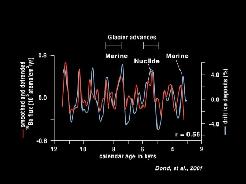
|
49. Bond, et al,
2001,Persistent Solar Influence on North
Atlantic Climate During the Holocene: Science, Vol. 294, Issue 5549,
2130-2136. See page 49 |
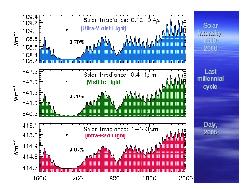
|
50. Daly, John, 2005, The
‘Hockey Stick’: A New Low in Climate
Science: http://www.john-daly.com/
hockey/hocky.htm
(accessed
1/8/2006). |
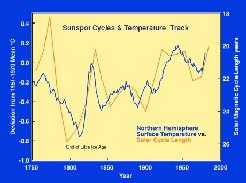
|
51. Solar intensity vs.
earth temperature. A great correlation.
Adapted from Hoyt, D. V., more on page 51 |
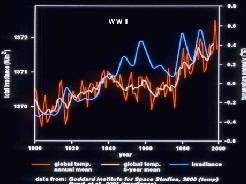
|
52. Note that it is
likely WWII and atmospheric nuclear weapon testing
has some effect on global temperature. |
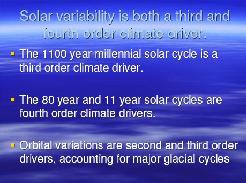
|
|
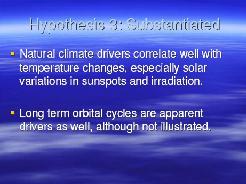
|
|
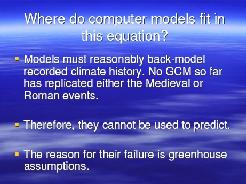
|
|
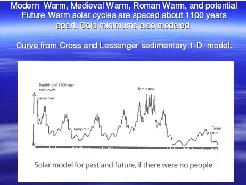
|
56. This primitive model
more closely replicates past climate than any
GCM. Data input 11 year, 80 year, and 1100 year solar cycles. |
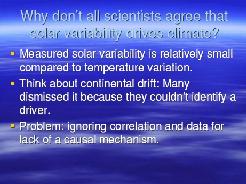
|
|
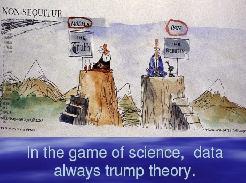
|
|
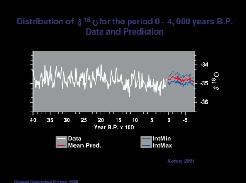
|
59. Kotov, Sergey R,
2001, Near-term Climate Prediction Using Ice Core
Data from Greenland, More see page 59 |
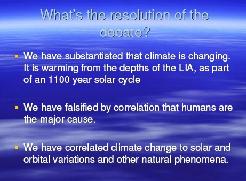
|
|
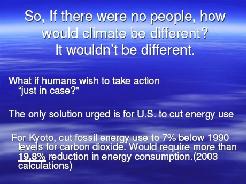
|
|
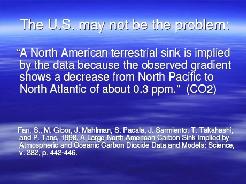
|
|
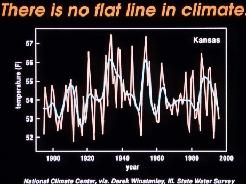
|
|
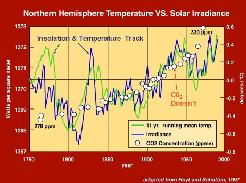
|
64. Hoyt, D. V., and K.H.
Schatten, 1997, The Role of the Sun in
Climate Change: Oxford University Press, New York, 279 p More see
page 64 |
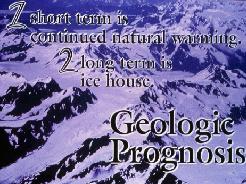
|
|
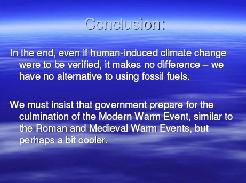
|
|
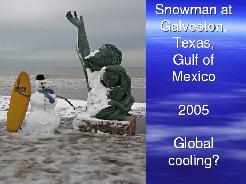
|
|
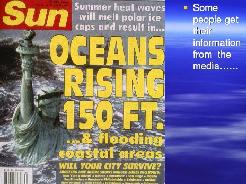
|
|
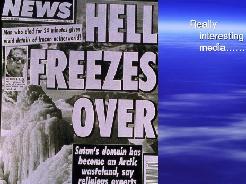
|
|
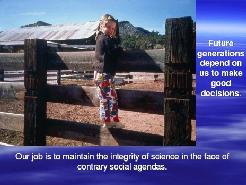
|
|





















